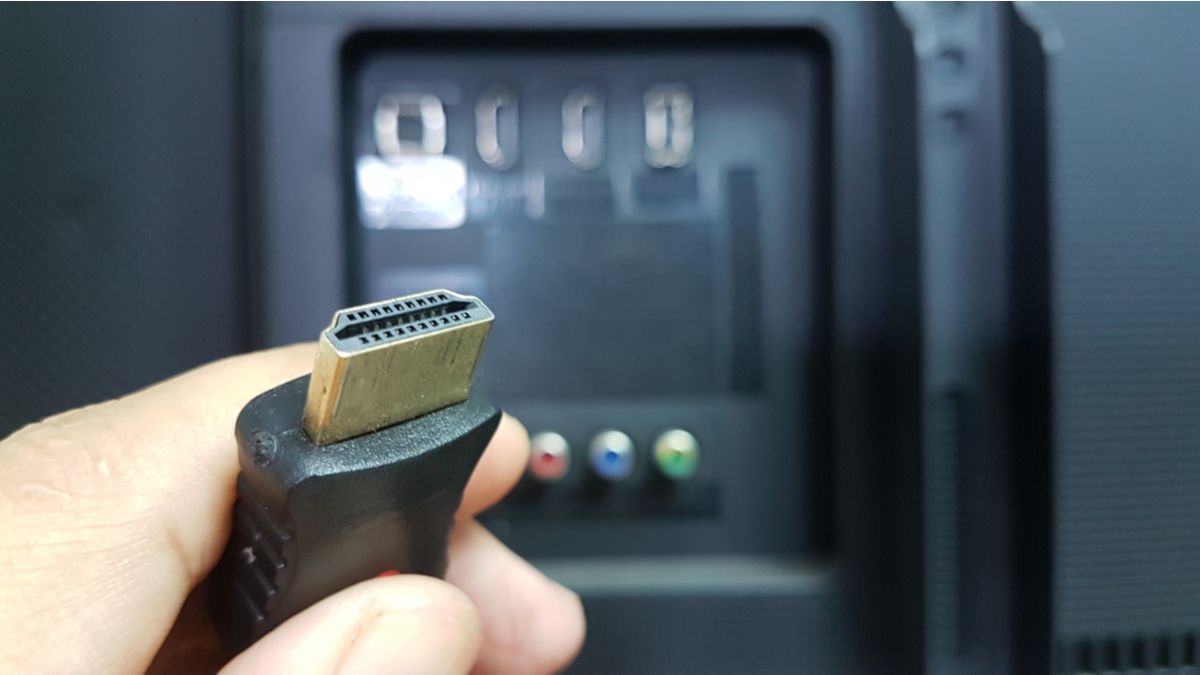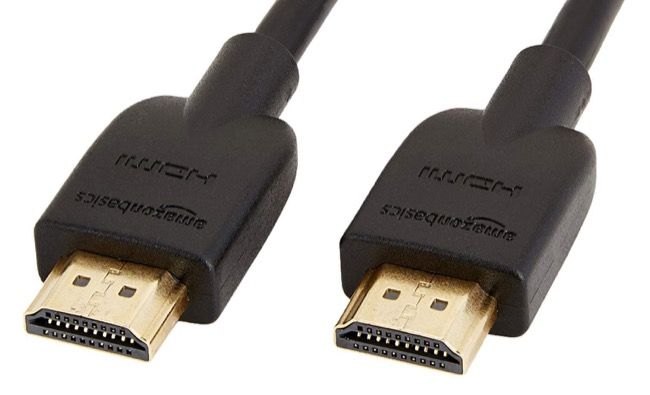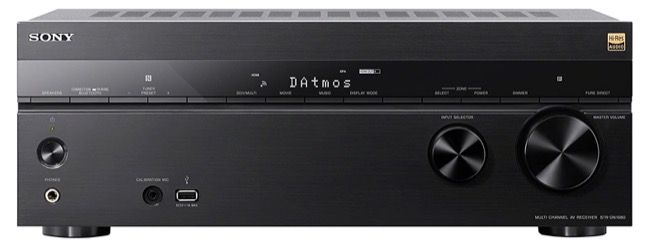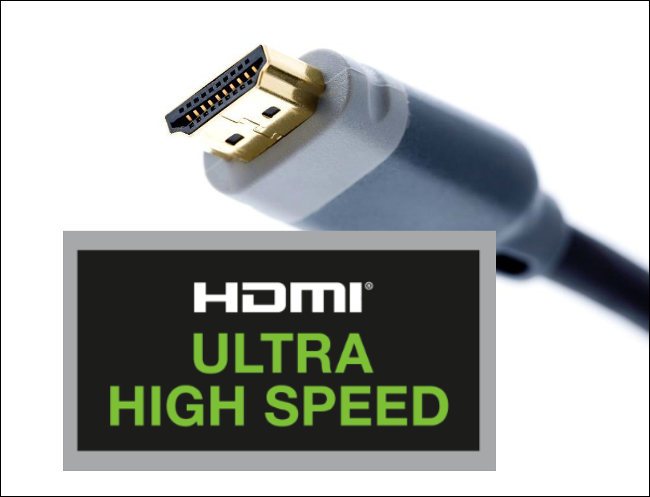Quick Links
The hardest part of troubleshooting an audiovisual issue is finding out which component is to blame. In the case of a video problem, there could be three culprits: your source device, your display, or the cable in between. Here are some tips for identifying and fixing audiovisual anomalies.
Signs of a Faulty HDMI Cable
Signs your HDMI cable may be faulty closely mirror other faults, so even if you see these issues the cable may not be to blame. Once you've identified a problem, it's time to move on to the next phase of troubleshooting: isolating the root cause.
One of the most common issues with a faulty HDMI cable are "sparkles" or flickering dots that are usually white. This might look like shooting stars or white noise, and may manifest as subtle "interference" or be much more distracting.
An image that cuts out can also be caused by a dodgy HDMI cable. This could result in no image at all being seen on screen (a problem that's hard to miss) or as periodic "blackouts" where the screen goes completely black and then comes back again.
A less-than-stellar image that looks fuzzy or grainy (like an extreme version of the "sparkles" mentioned above) may also be caused by a bad cable. Colors may look desaturated and the image may appear solarized, overexposed, or washed-out.
Since HDMI cables also have a lane for communications, remotes that can communicate with other devices may also stop working. For example, the Apple TV and Xbox Series consoles both support control with a TV remote on supported TVs.
What Causes an HDMI Cable to Fail?
An HDMI connector uses 19 pins, so if any of these pins or the individual lanes inside the cable become damaged you're going to experience issues. These pins carry various information like video, audio, clock information for syncing, and communications data.
Physical damage will cause problems for an HDMI connection, whether it's damage to the connector or pinching of the cable. If you're using a device like a desktop monitor that is constantly plugged in and unplugged from your laptop, you're more likely to encounter problems due to the additional wear.
A lot of devices come with cheap pack-in cables that may not be of the same standard as a quality third-party cable. A "bad" cable that was soldered poorly could fail even under very little stress. This could even be caused by environmental factors like changes in temperature or humidity.
You can protect your cables by learning how to wrap and store them properly. Believe it or not, most cables will naturally coil in a certain direction, and adhering to this is key to keeping them in tip-top condition.
If you suspect damage to your HDMI cable is to blame, unplug it from both the source and display and then inspect it thoroughly. The pins should resemble the image above, and the cable shouldn't be lumpy or have signs of crushing or pinching.
Ports, Receivers, and TV Settings May Be to Blame
The problem with a faulty HDMI cable is that it often presents the same symptoms as other failing components, like HDMI ports. The easy way to test this is to use a different cable with the same source device in a different HDMI port or to use the same cable in a different port with the same source device.
When troubleshooting an issue like this, you should only change one variable at a time, whether it's the cable, source device, or port itself.
While intermittent video and audio can be a sign of a faulty cable, having video but no audio generally points to another issue. HDMI cables carry audio and video over the same connection, and since video uses much more bandwidth you're more likely to notice problems with the video first.
If you use a home theatre receiver for surround sound, a soundbar, or a splitter for managing many HDMI devices, it's a good idea to remove the intermediary device from the equation entirely. Test your cable by plugging directly from the source into the TV.
Some intermediary devices like receivers and HDMI splitters can experience problems with HDCP anti-piracy measures which can cause image blackouts and error messages to appear. Older cables that aren't compliant with the required HDCP version can also cause problems, even though the cables aren't faulty.
Visual problems (particularly washed-out colors) can also be caused by "deep color" outputs that send a signal with a color depth of 10-bit or more on compatible displays. If you enable these expanded color ranges on a source device, be sure to also enable them on your TV. This setting usually needs to be enabled on a per-port basis.
HDMI 2.1 Devices May Need New Cables
HDMI 2.1 debuted on the Xbox Series X, PlayStation 5, and NVIDIA 30-Series graphics cards in 2020. Many TVs and monitors now support the standard and its associated suite of features, including variable refresh rate (VRR) and auto low latency mode (ALLM).
Most HDMI 2.1 devices come with the required cable, including Sony and Microsoft consoles. There is nothing to be gained from swapping this cable out for a "better" premium version. Other devices, like graphics cards, may require you to purchase a genuine HDMI 2.1 cable if you want to make use of additional bandwidth for high frame rates and resolutions.
Not all image modes require an HDMI 2.1 connection. For example, HDMI 2.0b can carry a 4K HDR signal at 60Hz, with some devices even making use of HDMI 2.1 features like ALLM using older cables.
If you're buying a new set of HDMI 2.1 cables, you can use the HDMI Licensing Administrator's own smartphone app to verify that your cable is genuine. We strongly recommend against buying so-called "premium" HDMI cables that cost exorbitant amounts of money. There is no image quality to be gained and a cheap cable will do just fine, provided it meets the 48 Gbps bandwidth requirement.
Cable Length Matters Too
The vast majority of HDMI cables are passive, with a connector at each end connected to some shielded copper inside. The further the signal has to travel, the more it can degrade and this means that passive HDMI 2.1 cables have a maximum length of around 5 meters (around 16.5 ft), according to the HDMI Licensing Administrator.
Most HDMI 2.1 cables are no longer than 3 meters (around 10 ft) for this reason. Even older HDMI 2.0 or earlier devices can experience problems with especially long cable runs, for example when using splitters or extensions to extend the run.
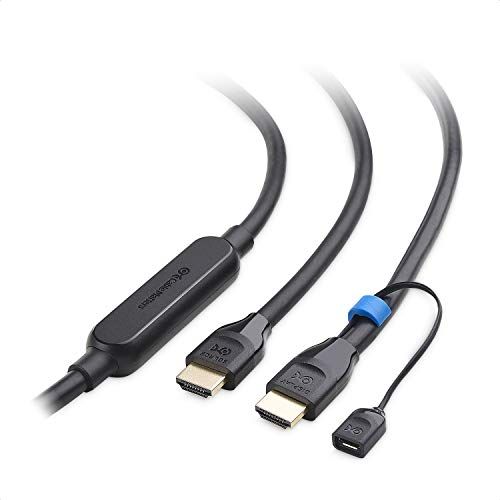
Cable Matters Active 48Gbps Ultra HD 8K Long HDMI Cable 25 ft / 7.5m with HDR for PS5, Xbox Series X/S, RTX3080 / 3090, RX 6800/6900, Apple TV, and More
Use this powered HDMI 2.1 cable to reach up to 25 ft without signal loss, complete with a port for external power if your source device can't keep up.
If you need a longer HDMI 2.1 cable run you can use an active HDMI 2.1 cable instead. These cables boost the signal and may require additional 5V power (usually in the form of a USB port) than your device supports. You can buy active HDMI cables like the Cable Matters Active HDMI Cable in runs of 16 ft and 25 ft.
These powered cables cost more than their passive equivalents but they're still nowhere near the prices some manufacturers charge for so-called "premium" HDMI cables.
Invest in Spare Cables for Faster Troubleshooting
The easiest way to identify a bad cable is to simply swap it out when you first notice an issue. If you keep a few spare HDMI 2.1 cables around, you'll cover both older HDMI 1.3 and 2.0 devices (the cables are backward compatible) as well as current and upcoming devices that push more pixels at higher frame rates.
Does your monitor have HDMI, DisplayPort, and USB-C? Work out the best monitor connection for your setup.

